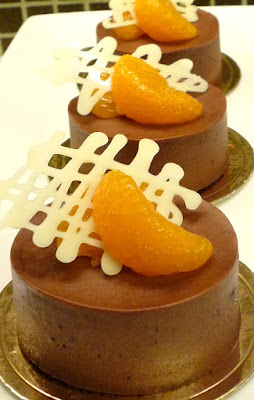The downside to making your own loaf, as most bakers will agree, is the hard labour of kneading, waiting for the dough to rise and then kneading again... the cycle can continue for 2 or 3 rising till the dough is ready for the oven (though good for working out those arm muscles!!). These days thankfully we can turn to bread machines, which is a wonderful invention, but as I found out for myself, its not completely foolproof and in general churns out loaves that are not as tasty as those made by hand.
I have a very simple and basic bread machine by Moulinex that came as a free gift - other than start-to-bake programs it doesn't handle options for selecting certain specific processes (e.g. it can't do just knead for # minutes), so other than plain white/wheat loaves I haven't really tried using it for anything else. It also churns out loaves that are only 1 shape, tends to be dryer at the side than top due to the positions of the heating elements and has a big hole at the bottom where the kneading pad needs to be. The bread texture is tougher as well and I think it may have to do with the baking stage starting in accordance with a fixed program rather than when the bread has risen enough (the timing of which can differ depending on the type of yeast, flour, the day's humidity, temperature conditions, etc).
After hearing successful stories from other bakers about their experience with bread machines and feeling a little adventurous this week, I decided to give my bread machine another chance and make brioche with it BUT only using the machine for the kneading process. Given my machine doesn't have a selection for "knead only", I had to time it really well and remove the dough from the machine and finish the final knead, shape and rise manually by hand. I allowed the dough to rise for 2 hours (almost double in size) before baking - the bread machine would have only allowed 55 minutes before starting the bake. Lastly, I also baked it using the oven and in a traditional loaf tin (without kneading pad).
I was extremely happy with the result (bread had the right texture and the crust was crisp) and am appreciating my bread machine more now... hehe... (thankfully i didn't throw it out during my house move a few months ago - almost did!). Will definitely want to try out more bread recipes with the machine now that I know how to work around its disadvantages. If anyone's thinking of buying a bread machine, please buy one that has the flexibility of a knead only program coz the fact that mine doesn't still really sucks!
For those who are wondering, brioche is a highly enriched french bread, whose high egg and butter content give it what is seen as a rich and tender crumb. It has a dark, golden, and flaky crust from an egg wash applied before and after proofing.... definition courtesy of wikipedia...















